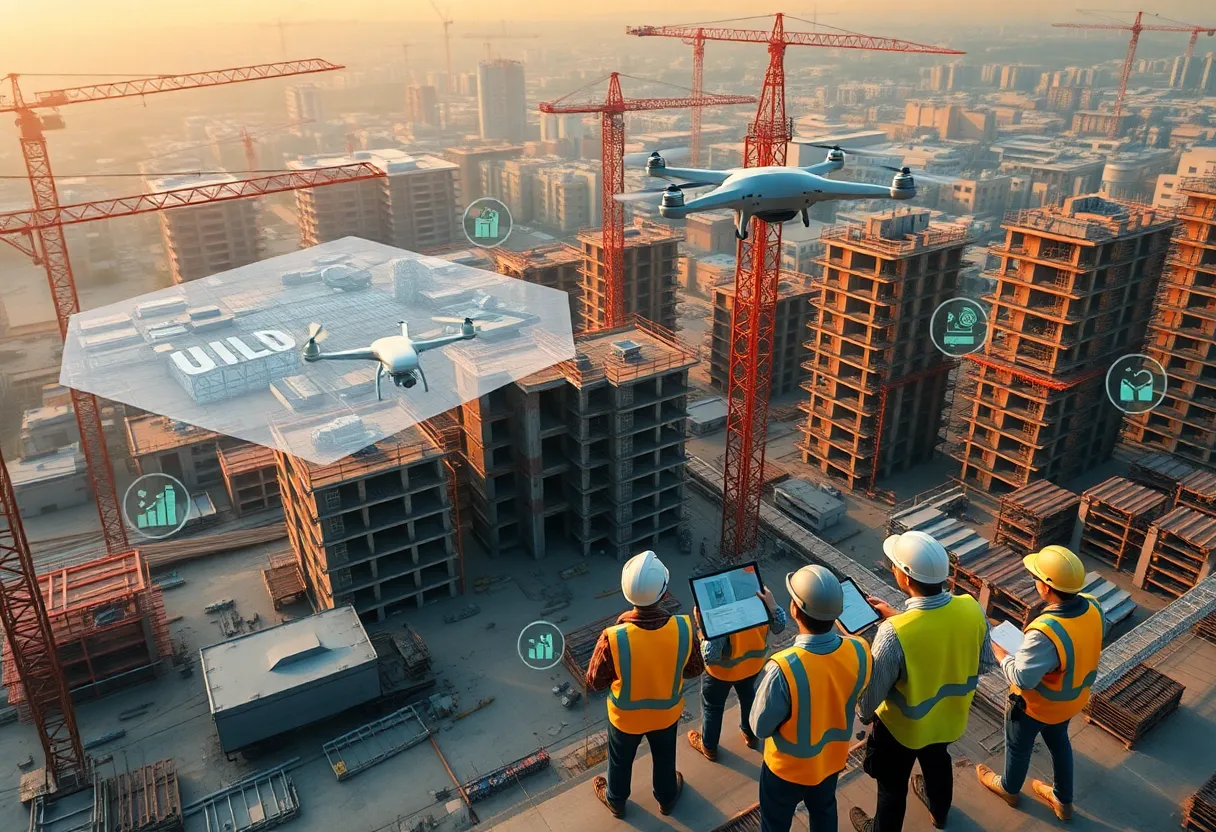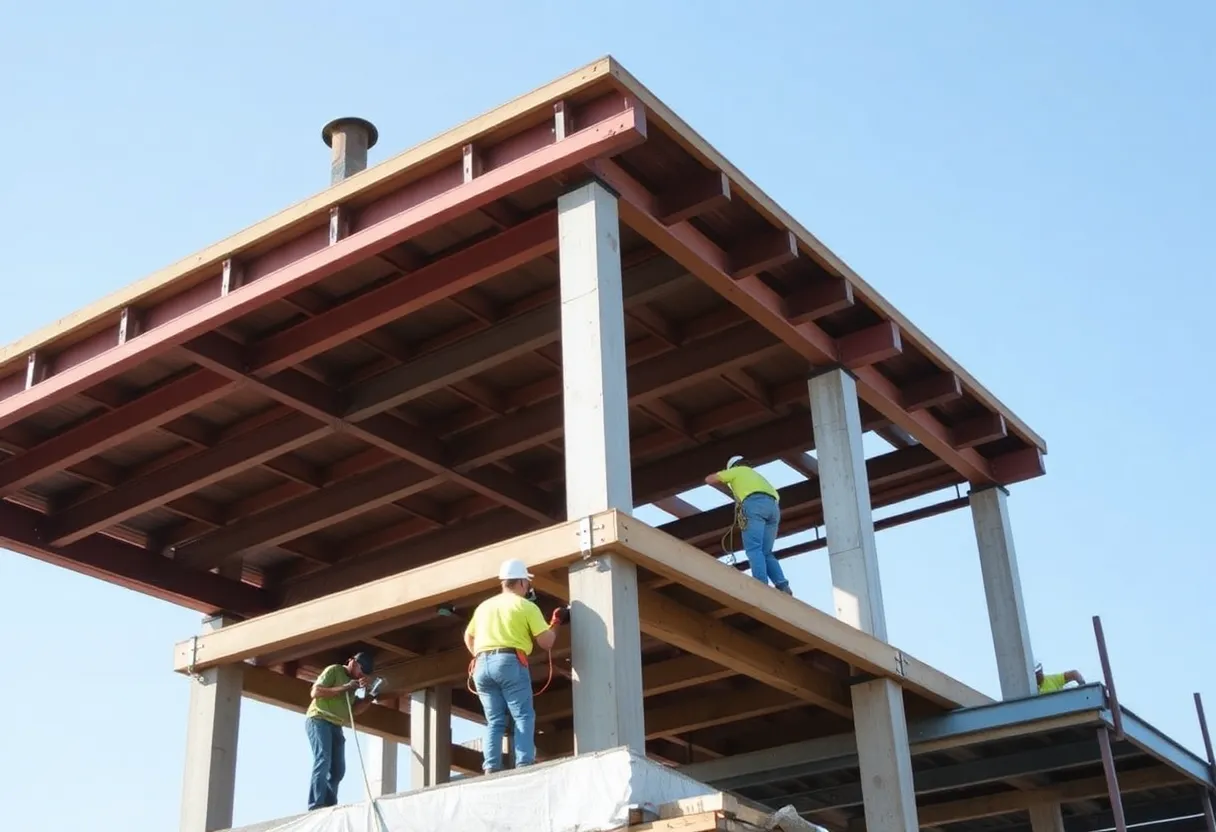India, August 30, 2025
News Summary
India’s infrastructure expansion faces a growing risk from a severe shortage of Building Information Modeling (BIM) professionals. Experts warn the country needs roughly ten times the current BIM workforce to avoid project delays, cost overruns and reduced global competitiveness. Major projects across airports, transit, highways, smart cities and green buildings depend on integrated digital workflows that BIM enables. Root causes include outdated curricula, fragmented upskilling and low stakeholder awareness. Leaders recommend modernizing education, scaling industry–academia project-based training, offering incentives for adoption and running sector-wide awareness campaigns to align skills with digital and sustainability goals.
India’s infrastructure surge faces a digital skills crisis: BIM shortfall could slow projects and drive up costs
India’s rapid infrastructure expansion is at risk from a severe shortage of Building Information Modeling (BIM) experts, industry leaders warn. With the country on track to become the third-largest construction market by 2030, experts say India will need roughly ten times the current number of BIM professionals within the decade to avoid delays, overspending, and declining global competitiveness.
Why the shortfall matters now
Major projects across airports, highways, mass transit systems, smart cities, and green buildings are reshaping India’s landscape. Modern infrastructure increasingly depends on integrated digital workflows and collaborative platforms. BIM sits at the center of those workflows, enabling coordinated design, cost optimization, and asset lifecycle management. Without adequate BIM capacity, projects risk repeating familiar industry problems: planning bottlenecks, time and cost overruns, inefficient use of materials, and lower productivity.
Scale of the challenge
The construction sector’s fundamentals remain strong, with recent data showing a double-digit rise in nominal value added and gross output, and total spending crossing the US$2 trillion mark in the first half of 2024. Employment in construction rose to 8.3 million in July 2024, exceeding previous highs. Yet adoption of BIM in India is still limited and trails nations that already mandate BIM in public projects, such as the UK and Singapore. This lag contributes to a cycle of project delays and cost escalation that undermines efficiency gains from ongoing capital investment.
Root causes of the BIM talent gap
Industry leaders identify three core reasons for the digital skills deficit:
- Outdated education systems: Curricula emphasize theory and offer limited hands-on training in modern digital tools and workflows.
- Fragmented upskilling: Industry-led training programs lack structured, project-based learning that prepares professionals for real-world BIM collaboration.
- Low stakeholder awareness: Many decision-makers still treat BIM as optional rather than an essential, enabling technology for complex projects.
Consequences if action is delayed
Continued inaction on BIM upskilling could entrench inefficiencies, inflate costs, delay delivery of critical infrastructure, and weaken investor confidence. Global capital increasingly favors projects that meet modern digital and sustainability standards; lack of digital readiness may reduce foreign interest and slow flows of private equity into construction technologies and projects.
How BIM links to sustainability and resilience
BIM is more than a design tool. It supports sustainability goals by enabling accurate material quantification, carbon tracking, and simulation of climate impacts—critical for green buildings and climate-resilient infrastructure. A shortfall in BIM expertise could therefore hamper the delivery of low-carbon and resource-efficient projects as India scales up renewable targets and large-scale affordable housing and transport programs.
Recommended multi-pronged response
To bridge the gap, leaders urge a combined approach:
- Modernize curricula: Make BIM and digital workflows core learning outcomes in architecture, engineering, and construction programs nationwide.
- Industry–academia collaboration: Scale hands-on, project-based upskilling opportunities accessible to students and working professionals.
- Incentives for adoption: Use government and private incentives to weave BIM into large infrastructure and real estate projects.
- Awareness and cultural shift: Run sector-wide campaigns to reposition BIM from optional add-on to essential industry practice.
Broader industry context and digital trends
Across the engineering and construction sector, firms are adopting cloud tools, AI, IoT, drones, 5G/private cellular networks, digital twins, and automation to offset labor shortages and raise productivity. Drones for surveying and inspection and AI-enabled design tools are gaining traction, while advanced analytics are being used to turn site data into better design and delivery decisions. Global research and consulting analyses highlight strong investment momentum in AEC technology, rising M&A, and growing private equity interest—trends that connect directly to BIM capability.
Short industry briefings and personnel moves
A number of organizational updates reflect wider market shifts: one energy company has rebranded to signal a strategic pivot into sectors such as defence, energy, and real estate. Industry appointments include a new vice president for strategic planning at a major group and a head of projects and design joining a large logistics real estate developer. These moves underscore the emphasis on strategic planning, design excellence, and operational scaling across the sector.
Research, advisory and historical context
Recent industry analysis draws on proprietary modeling and expert inputs to project medium-term trends in investment, labor, and technology adoption. Historical commentary from earlier analysis emphasized that BIM adoption was already critical years ago, noting that population growth and rapid urbanisation would drive heightened demand for faster, better-planned infrastructure and that digital mandates and centralized policy would help accelerate change.
Contact and publication details
For additional information on industry reports and resources, listed contact addresses and emails were provided for administrative purposes, including an office address in Noida and specific contact email and phone details.
FAQ
What is BIM and why is it important?
BIM stands for Building Information Modeling. It is a digital process that enables integrated design, shared project data, clash detection, cost control, and lifecycle management of assets. BIM helps reduce rework, improve coordination, and supports sustainability and resilience planning.
How big is the BIM talent shortfall?
Experts estimate that India will require roughly ten times the current number of BIM professionals by 2030 to meet planned infrastructure and real estate projects without significant efficiency losses.
What are the main causes of the shortage?
Causes include outdated academic curricula, fragmented and limited hands-on upskilling programs, and low awareness among stakeholders about BIM’s central role in modern project delivery.
What steps can be taken to close the gap?
Recommended steps include updating academic programs, scaling industry-academia partnerships for project-based training, creating government and private incentives for BIM use, and running sector-wide awareness campaigns.
Will technology alone solve the problem?
Technology adoption is necessary but not sufficient. Closing the gap requires coordinated training, cultural change, and governance that embeds BIM into standard project delivery practices.
Key features at a glance
| Feature | Why it matters | Action needed |
|---|---|---|
| BIM capacity | Enables coordinated design, cost control, and lifecycle management | Scale training; integrate BIM into curricula |
| Skilling and upskilling | Bridges gap between theory and real project demands | Project-based apprenticeships and industry partnerships |
| Digital adoption | Supports productivity, safety, and sustainability goals | Government incentives; mandates on public projects |
| Investor confidence | Digital readiness influences foreign and PE investment | Standardize digital processes; show measurable outcomes |
| Technology stack | Cloud, AI, drones, digital twins reduce manual gaps | Integrate tech with workforce training and site practices |
Published analysis draws on industry research and sector data showing strong investment momentum, growing employment, and evolving skill needs. Addressing the BIM talent gap is framed as an urgent industry priority to ensure India’s infrastructure ambitions remain on schedule, cost-effective, and aligned with sustainability goals.
Deeper Dive: News & Info About This Topic
Additional Resources
- RPRealtyPlus: AR Harkunwar Singh calls for stronger BIM expertise to future‑proof Indian construction
- Wikipedia: Building information modeling
- Deloitte: Engineering and Construction industry outlook
- Google Search: engineering and construction industry outlook 2024
- RPRealtyPlus Interview: Why India isn’t ready for full‑scale BIM yet
- Google Scholar: BIM adoption India
- The Hindu: India needs to adopt BIM process to build infrastructure faster and efficiently (Autodesk)
- Encyclopaedia Britannica: Building Information Modeling (search)
- McKinsey: From start‑up to scale‑up — accelerating growth in construction technology
- Google News: BIM India talent
Author: Construction FL News
The FLORIDA STAFF WRITER represents the experienced team at constructionflnews.com, your go-to source for actionable local news and information in Florida and beyond. Specializing in "news you can use," we cover essential topics like product reviews for personal and business needs, local business directories, politics, real estate trends, neighborhood insights, and state news affecting the area—with deep expertise drawn from years of dedicated reporting and strong community input, including local press releases and business updates. We deliver top reporting on high-value events such as the Florida Build Expo, major infrastructure projects, and advancements in construction technology showcases. Our coverage extends to key organizations like the Associated Builders and Contractors of Florida and the Florida Home Builders Association, plus leading businesses in construction and legal services that power the local economy such as CMiC Global and Shutts & Bowen LLP. As part of the broader network, including constructioncanews.com, constructionnynews.com, and constructiontxnews.com, we provide comprehensive, credible insights into the dynamic construction landscape across multiple states.





